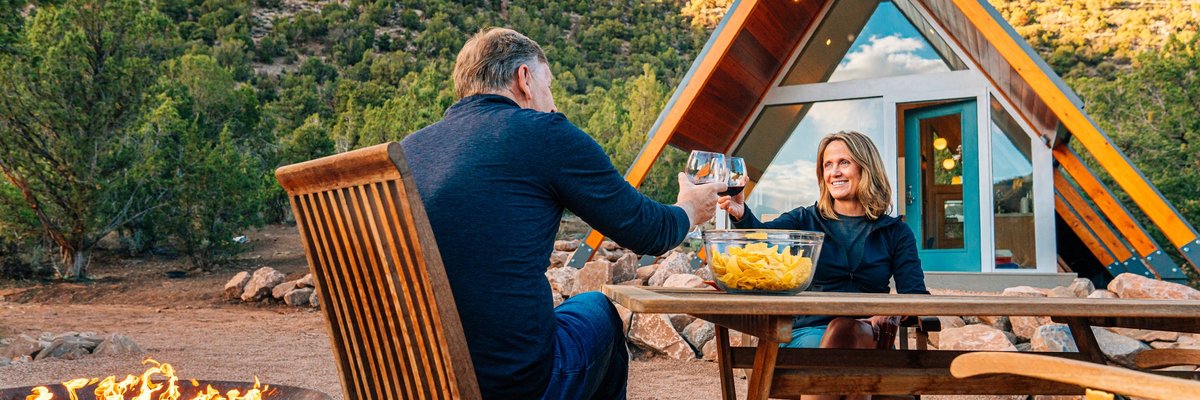Congrats on Retirement! Should You Consider Moving Into a Tiny Home?
KEY POINTS
- One out of three older homeowners spend at least one third of their income on housing.
- Tiny homes cost an average of $45,000, a fraction of the cost of a traditional home.
- Monthly expenses for a tiny home average $600 and 68% of those living in one are mortgage-free.
Is a tiny house a good fit for your post-work life?
Congratulations! You have joined the 3 million other workers who have retired this year. One question you may be asking yourself is if you have enough money stashed away to enjoy a comfortable retirement. You are not alone. The median retirement savings for all workers is just $97,000. One survey found that the savings expectations for a comfortable retirement is $1.04 million.
Among older homeowners, about one in three spend at least one third of their income on housing, compared to three out of four older renters. With housing costs taking up a significant chunk of a retiree's income, should you consider moving into a tiny home in your retirement?
What is a tiny home?
The average size of a traditional home is 2,261 square feet. In comparison, a tiny home is typically 100 to 400 square feet. They rarely go over 500 feet. These tiny dwellings have been getting more and more popular as housing costs in the U.S. rise.
How much do tiny homes cost?
The biggest benefit of a tiny home is the cost savings. The average tiny home costs $45,000, with a typical price ranging from $30,000 to $60,000. This is a fraction of the what the median traditional house costs in the U.S. The cost of a tiny home can be as low as $8,000 and as high as $150,000, depending on the type of amenities you choose.
Why should a retiree move into a tiny home?
Since tiny homes are much smaller than regular homes, monthly expenses (including a mortgage) can be as low as $600. On top of that, 68% of people who live in a tiny home are mortgage-free, and 55% have more savings than the average American. Maintenance and upkeep costs are also lower, as are as utilities and property taxes. Those on a fixed income can benefit financially from living in a tiny home.
Many retirees also have the goal of traveling. Some tiny homes have wheels and are therefore mobile. They give you the freedom and opportunity to move from one state to another. Tiny homes are also more sustainable, shrink your carbon footprint, and are conducive to a minimalist lifestyle. So if you want to downsize and live a less cluttered life, then a tiny home may be for you.
What are the downsides of a tiny home?
While there are financial and mental benefits of owning a tiny home, some people may not want to spend their retirement in one. There is considerably less living and storage space. If you want to entertain family and friends, then it is much more difficult to do so in a tiny home. If you have hobbies you want to take up, there is less room to store your belongings.
Moving around while living in your tiny home can have its challenges. You may have to consider purchasing a vehicle to use for towing your home. These vehicles can be pricey. There are extra expenses such as gas, truck insurance, and permits. You will also need to ensure you abide by the zoning codes of the area you want to live in.
Is a tiny home right for you?
If your goal is to be able to travel around the country in your own home and downsizing isn't a concern, then a tiny home may be right for you. If you want to save on housing costs and are content with living a minimalist lifestyle, then you should consider a tiny home.
But if you want to retire in a large spacious home and don't want to change your lifestyle, then a tiny home may not be for you. A tiny home is not generally fit to entertain friends and family, especially if you want to spend time with your grandkids in the comfort of your home.
While the number of people living in tiny homes has increased, there is a possibility that it is a fad. Since traditional mortgage lenders typically do not offer mortgages on tiny homes and there is less demand for them when compared to traditional housing, tiny homes can decrease in value. Living in a tiny home isn't just a financial decision, but a lifestyle decision. It is important to do your research before you make the big leap and move into a tiny home.
Our Research Expert
We're firm believers in the Golden Rule, which is why editorial opinions are ours alone and have not been previously reviewed, approved, or endorsed by included advertisers. Motley Fool Money does not cover all offers on the market. Motley Fool Money is 100% owned and operated by The Motley Fool. Our knowledgeable team of personal finance editors and analysts are employed by The Motley Fool and held to the same set of publishing standards and editorial integrity while maintaining professional separation from the analysts and editors on other Motley Fool brands. Terms may apply to offers listed on this page.



